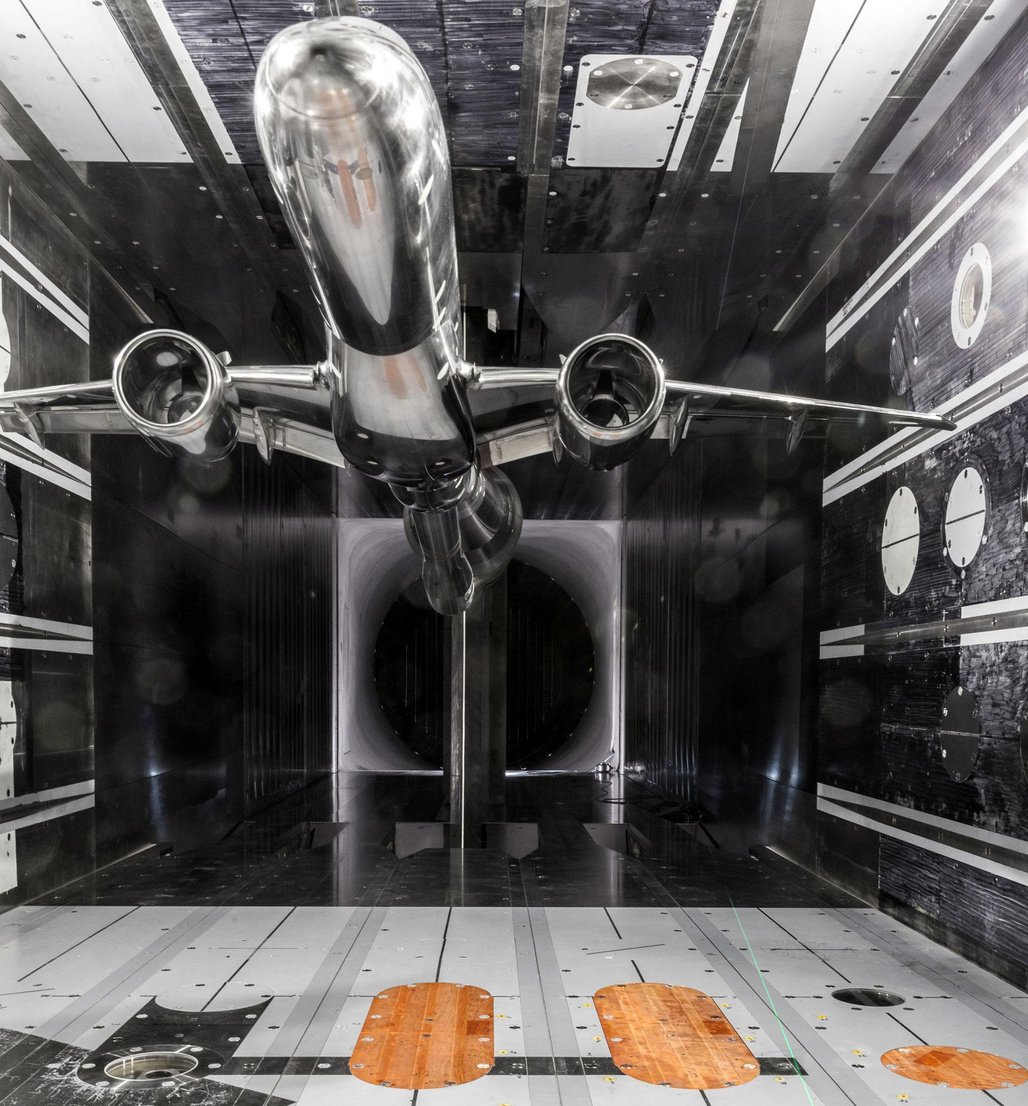Aircraft are particularly loud during take-off and landing. The noise is generated not only by the engines, but also by airflow over the wings. One reason for this is the shape of the wings and the position of the high-lift devices, which vary according to the flight situation. To find out exactly where the greatest sources of noise are, the German Aerospace Center (Deutsches Zentrum für Luft- und Raumfahrt; DLR) has tested a model from aircraft manufacturer Embraer for the very first time under realistic flight conditions in the European Transonic Wind Tunnel (ETW).
The measurement technologies and methodologies for analysing the Embraer aircraft were developed as part of the LoCaRe (Lokalisierung und Charakterisierung von flugrelevanten Lärmquellen an Hochauftriebssystemen – localisation and characterisation of flight-related sources of noise on high-lift systems) project. The high-lift configuration – that is, the way in which the flaps and slats interact – largely determines how slowly, steeply and quietly an aircraft can make its approach. One special feature of the current research is that acoustic measurements were carried out at the same time as the flow field research. This makes it possible to draw direct conclusions about the relationship between flow behaviour and noise generation.
To do this, the DLR researchers combined two measuring techniques for the first time in this wind tunnel – Particle Image Velocimetry (PIV) enables instantaneous flow fields to be measured by means of laser light, while a microphone array technique provides precise noise data. "Even applying individual measuring procedures in the ETW is a technical challenge. The possibilities that DLR has developed here are unique worldwide," says Thomas Ahlefeldt from the DLR Institute of Aerodynamics and Flow Technology in Göttingen.
The results will now be evaluated and compared with flight test data from Embraer. The goal is to use ETW tests of flight performance under realistic conditions to simultaneously pinpoint possible sources of noise during take-off and landing. New aircraft designs can then be made quieter during the early design stage using further analysis with DLR tools.
Contact
Thomas Ahlefeldt
German Aerospace Center (DLR)
Institute of Aerodynamics and Flow Technology
Experimental Methods
Bunsenstraße 10
37073 Göttingen


